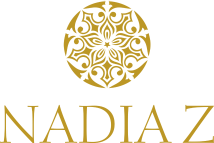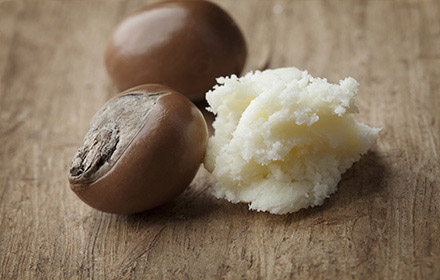Shea (Butyrospermum parkii)
en.wikipedia.org/wiki/Vitellaria
en.wikipedia.org/wiki/Shea_butter
The Shea tree grows wild in the equatorial belt of Central Africa, between Gambia and Sudan. A Shea tree needs between 8 and 15 years until the first harvest, and even longer to reach full capacity.
Women and children collect the fallen fruit and take them back to their villages to process the seeds into Shea butter. It is a laborious, complex process in which the quality of the work really determines the properties of the oil produced.
Producing Shea butter is an important source of income for many women. However, there are great fluctuations in availability and cultivation attempts have failed. Most Shea butter is currently exported for the food market. The Shea cosmetics market, however, is a high-value niche market enabling local producers to earn more from their yields.
Properties
This ingredient is famous worldwide for its regenerative, anti-inflammatory and UV absorption abilities. Its effectiveness depends on its percentage of unsaponifiables, including vitamins A. D, E, F, cinnamid acid and kariten, a component in latex.
Recent scientific studies support Shea butter’s alleged therapeutic value in the treatment of certain skin disorders.
The bioactive substances in Shea butter reside in the unsaponifiable fraction, including antioxidants, such as tocopherols (vitamin E), and catechins (also found in green tea) and triterpene alcohols, known to reduce inflammation. It also contains cinnamic acid esters, which limit the skin’s capacity to absorb ultraviolet (UV) radiation, and lupeol, which prevents the effects of skin aging by inhibiting enzymes that degrade skin proteins, as well as keratin, a latex constituent.
Shea butter also protects skin by stimulating the production of structural proteins by specialized skin cells, thus slowing the aging process.
Benefits
Shea butter has been used for centuries, perhaps millennia, as a skin treatment in Africa, particularly for newborn infants. It is believed to have been a favorite of Cleopatra and the Queen of Sheba and is particularly recommended for very dry, damaged, eczema-prone skins.
Use in NadiaZ
Most of NadiaZ Care Line products use unrefined virgin Shea butter oil for its incomparable protective coating, nourishing and anti-inflammatory properties.
NadiaZ carefully selects its Shea butter to obtain the best unsaponifiable content. While the Western market prefers the refined version of Shea butter that is exempt from its nutty slightly smoky scent (depending on manufacturing processes), this is not ideal for cosmetics since through refining the Shea loses its most valuable components.
All NadiaZ products containing Shea butter therefore bear its scent, which wears off quickly once absorbed in the skin and hair. Shea butter tends to develop a grainy consistency which can be easily corrected by melting the products at low temperature (30°C) and resolidifying them in a fridge.
It is found in its highest concentration in African Wisdom Body Butter.
See also:
en.wikipedia.org/wiki/Vitellaria
en.wikipedia.org/wiki/Shea_butter
fr.wikipedia.org/wiki/Karité
fr.wikipedia.org/wiki/Beurre_de_karité
L’arbre de karité pousse de façon sauvage dans la ceinture équatoriale de l’Afrique centrale, entre la Gambie et le Soudan. Cet ingrédient est célèbre dans le monde entier pour ses capacités de régénération, anti-inflammatoires et d’absorption UV. Son efficacité dépend de son pourcentage d’insaponifiables, comprenant les vitamines A, D, E, F, l’acide cinnamique et le karitène, un composant du latex.

